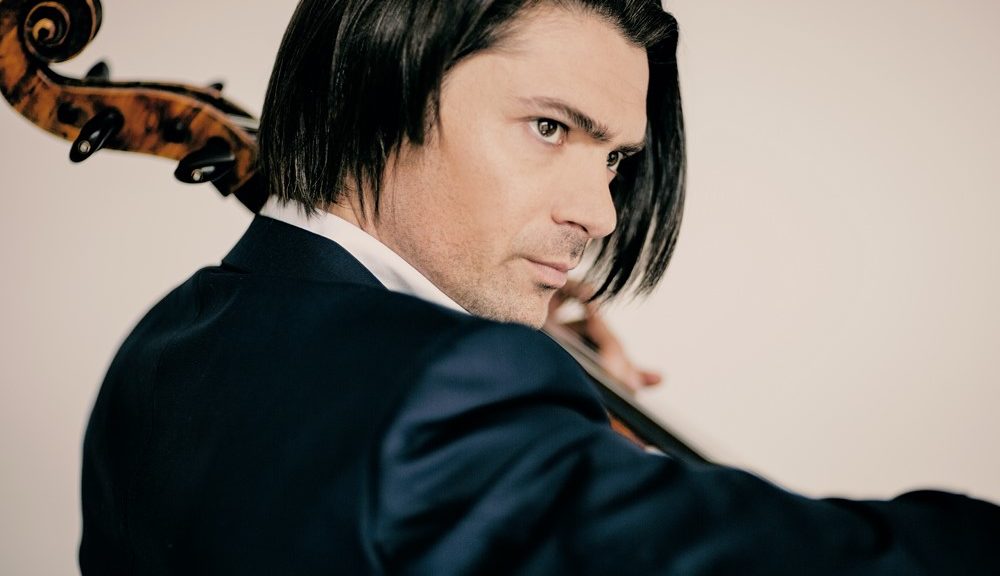
RUSSIANS, MTT: BOTH ARE BACK
Pairing a most introspective work with a most extroverted one was yet another instance showing Michael Tilson Thomas still on top of his game in programming. And his program of Shostakovich and Prokofiev was winning wide admiration from the patrons, despite the works coming out of Russia, not exactly our closest neighbors these days, and out of old Soviet Russia at that. As if to attest to his on-going recovery from the brain surgery of last summer, Music Director Laureate MTT preceded the music with an off-the-cuff explanation of a work widely classed as inscrutable: the late, late Cello Concerto No. 2 (1966) of that ultimate introvert, Dmitri Shostakovich.
The two seniors carried it off. But the focal figure Jan. 20 at the San Francisco Symphony was a third, the awe-inspiring French mid-career cellist, Gautier Capuçon, now evoking comparisons to Yo-Yo Ma and Mstislav Rostropovich. Because this was no ordinary concerto; the traditional concerto balance is here up-ended. Soloist Capuçon opens and plays alone for some five minutes, seemingly evoking the innermost moods of the reclusive Soviet composer. And the orchestra throughout more often provides punctuation and afterthoughts, abrogating the usual balanced-partner role with the cellist.
This ruminative personal statement from the composer, who added to the mystery by keeping private to the tomb all his innermost reflections and motivations, was significant if so far unplumbed. Under a cruel thought-control regime with quick trigger finger, no one ever dares write a candid memoir. But in some ways this opus was a telling coming-out for the composer, who was no longer threatened with a figurative gun-to-the-temple as had happened to him in the years of the paranoiac ruler Stalin (till 1953), when gulags were wide open and waiting for prisoners of every stripe. (That aura of nonstop unease might well account for the composer’s very nervous comportment throughout as well as his eventual heart problems.)
Shostakovich however was not above being whimsical. Here and there he added quotes from his earlier music, including a flash of his first concerto. And, like Igor Stravinsky, he “inexplicably” inserted a street vendor’s humble tune (hawking pretzels!), suddenly promoted to the concert hall.
This is a long 35-minute piece of unorthodoxy, devoid of light moments, devoid of the “mandatory” cadenza (the soloist’s display of virtuosity). He introduces more dissonance than in his early works, including an impressive duet for two squabbling brass that brings to mind tomcats fighting in the alley the other night.
The work was written for the late great cellist Rostropovich, who I felt honored to hear in recital back in 1963 playing on a rare US tour in humble Harmon Gym, the Cal basketball arena. But where Rostropovich cultivated a sound with a broad, expansive patina, the Frenchman Capuçon hews to total lucidity and articulation in an interpretation no less impressive. His command of multiple double stops high up the fingerboard would drive many struggling cello students to drink.
Far better know is the effusive Symphony No. 5 of Sergei Prokofiev, that master of effusive brass, grand melodiousness and hyperactive percussion. In the finale he sets in motion one of his patented specialties: immense, inexorable momentum, full of color and firing on all 16 cylinders. In the Adagio he brings on long, long phrases, much as he had in his masterpiece ballet “Romeo and Juliet,” arguably the finest evening-length ballet of the 20th century.
Politically, he fared even worse than Shostakovich. Dying on the same day as Josef Stalin, his passing was not only ignored in the orgy of self-effacing homage to the despotic leader, but the Soviet media never even mentioned the composer’s passing till far later in their grievous act of self-censorship. Shostakovich of course went on to live and compose in perceptibly broadened artistic freedom for 42 more years.
In both works, MTT worked with unimpeded interpretations, just as though he had not had serious brain surgery a half-year ago. And the SFS orchestra once again was dazzling.
THE SOVIETS IN BERKELEY—Among the various (closely controlled) Russian musicians performing on campus in that era was the Borodin String Quartet on several 1960s tours. Their interpretation of Borodin’s Quartet No. 2 was enough to melt one’s heart. They made a pitch to the university of planning a series of concerts presenting all of Shostakovich’s string quartets, with the possibility of the composer himself attending. The university committee in charge however, with strong music-faculty representation, nixed the idea because they did not view Shostakovich’s music to be substantial enough to warrant all that play. Musically, the composer’s stock went up sharply over the years, leading to widespread moaning over that unique opportunity missed.
SAN FRANCISCO SYMPHONY in concert at Davies Hall, S.F., Jan. 20-22, MTT conducting, Gautier Capuçon as cello soloist. For SFS info: (415) 864-6000, or go online: www.sfsymphony.org.